I've noticed that in all resources on diodes and rectifiers, they show the output voltage as the positive half-wave of the input signal. However, that seems wrong.
I understand that there's a voltage drop across the diode, and if the total voltage is below this level, the diode is closed. Therefore, it'd only seem logical, if the diode didn't open right away, but only after the input wave reaches this voltage.
Here's my illustration - first, input. Second, my idea of output. Third - output as shown in textbooks.

If I am wrong, how is it possible that there's no "flat area" in the output signal, when the input is below the diode's opening level?
